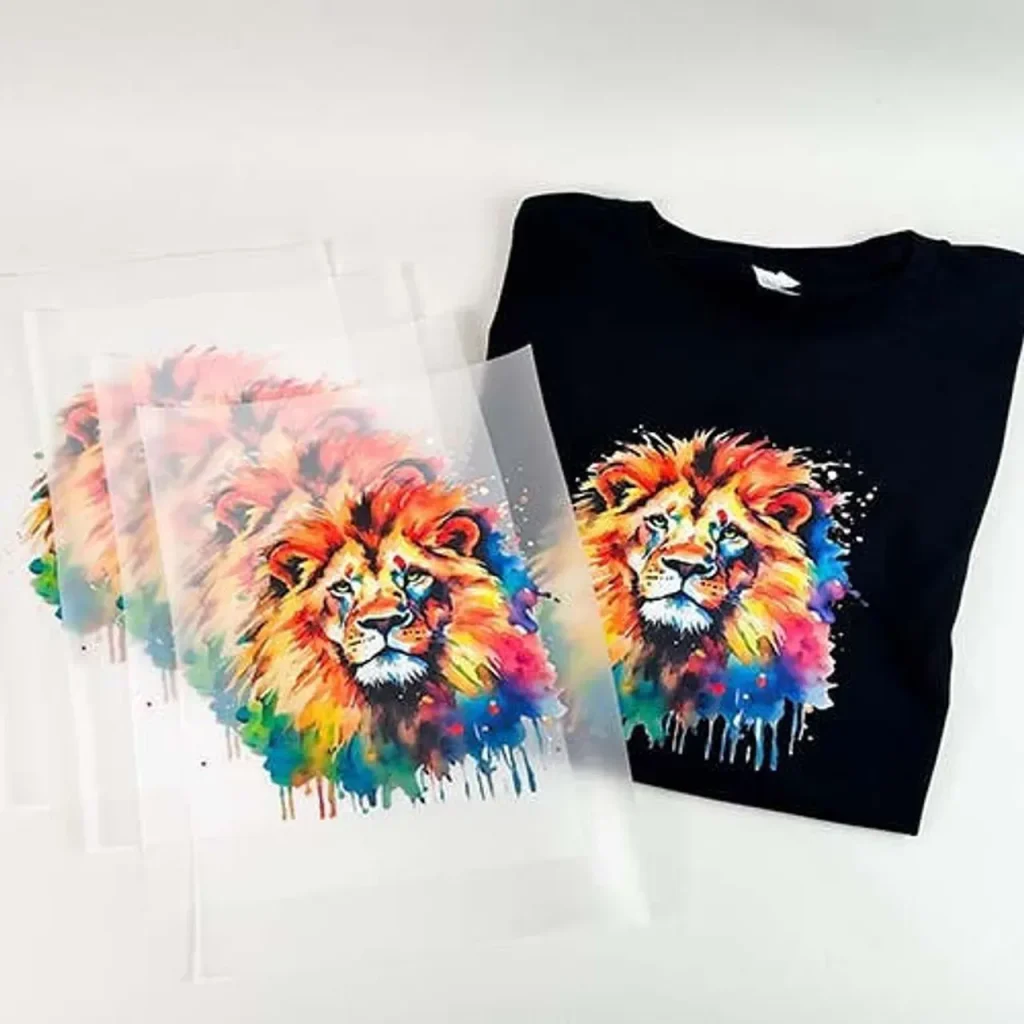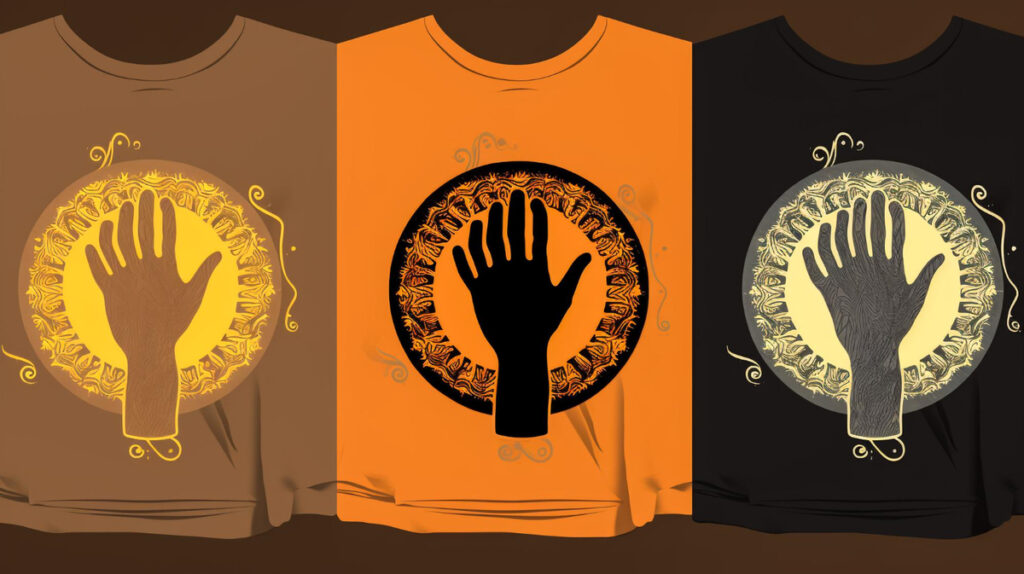DTF Transfers, short for Direct-to-Film Transfers, are at the forefront of innovation in the custom apparel printing industry. This cutting-edge technique allows users to create vibrant and long-lasting designs that can seamlessly adhere to a variety of fabrics. Whether you’re a small business owner looking to enhance your product offerings or a hobbyist eager to explore new printing methods, DTF printing provides the perfect solution. In this guide, you will discover essential DTF printing tips and the intricacies of the DTF transfer process, ensuring you’re well-equipped to produce stunning designs. Learn how heat press techniques combined with DTF transfers can elevate your custom apparel to the next level!
In today’s vibrant world of custom garment creation, Direct-to-Film printing emerges as a groundbreaking approach to achieve exquisite designs on textiles. Often referred to as DTF printing, this method utilizes a specialized film that allows designs to be transferred with stunning clarity and resilience. If you’re venturing into the realm of personalized clothing or looking for efficient printing solutions, understanding the nuances of the transfer process will be invaluable. With the rise of heat transfer techniques and custom prints, this technique has quickly gained popularity for its versatility and effectiveness. Dive into the essentials of DTF processes, and discover how they can reimagine your custom apparel printing projects!
Introduction to DTF Transfers
Direct-to-Film (DTF) Transfers are an innovative printing technique that has swiftly taken over the custom apparel industry. Utilizing specialized films, vibrant inks, and precise heat application, DTF printing allows for the creation of detailed and colorful designs that can be transferred onto a wide range of fabrics. Whether you’re a business owner looking to expand your product line or a hobbyist wanting to personalize clothes, understanding DTF transfers is crucial. This revolutionary process not only enhances the quality of prints but also provides unparalleled versatility, allowing for rapid production times and the ability to cater to diverse fabric types.
In the world of custom apparel, the ability to produce high-quality, durable prints is paramount. DTF transfers excel in achieving this as they can seamlessly imprint vibrant colors on cotton, polyester, and even blended fabrics. This method stands out against traditional options like screen printing and Direct-to-Garment (DTG) printing due to its simplicity and effectiveness, enabling users to create designs that are not only visually appealing but long-lasting as well. As we delve deeper into DTF printing, you’ll discover essential tips and techniques to maximize your print quality.
Understanding the DTF Transfer Process
The DTF transfer process involves several key steps that contribute to its success. Initially, a design is printed onto a specialized film using high-quality DTF inks. This film is then coated with a powder adhesive, allowing for a strong bond between the print and the fabric upon heat application. Once the print is ready, a heat press is used to transfer the design onto the chosen garment. This method is particularly effective for achieving vibrant colors and intricate details, making it a popular choice for custom apparel printing.
One of the advantages of DTF is its ability to blend different textile materials, thus making it more versatile than other printing techniques. As a result, businesses can cater to a broader audience, from athletes to fashion enthusiasts. Understanding the nuances of the DTF transfer process ensures that each piece produced boasts exceptional quality and durability, which is essential for building customer loyalty in the competitive custom apparel market.
Essential Equipment for DTF Printing
To successfully embark on your DTF printing journey, it’s critical to invest in the right equipment. A dedicated DTF printer is vital as it is designed to handle the unique inks required for this process. Choose a printer that fits your budget and meets your production needs. Additionally, selecting a high-quality powder adhesive will ensure proper adhesion during the heat press phase, which significantly impacts the durability of the prints.
Another crucial tool in your arsenal is the heat press machine. Selecting a reliable model allows for consistent temperature and pressure application, ensuring uniform results across all your printed garments. Lastly, the choice of transfer film plays a significant role in achieving clarity and vibrancy in your designs. Opt for quality films that enhance the visibility and durability of the prints, thereby elevating your custom apparel offerings.
Tips for Successful DTF Transfers
For those new to DTF printing, mastering the temperature and pressure settings is vital for achieving optimal results. A standard temperature range of 320°F to 340°F (160°C to 170°C) is generally effective for most fabrics, but it’s essential to adjust these settings based on the type of material you’re working with. Additionally, pressing time should be limited to 10-15 seconds; exceeding this can lead to issues with adhesion and overall print quality.
The quality of both the film and ink used in the DTF printing process directly influences the finished product. Investigate and purchase only high-grade inks specifically formulated for DTF application. Poor-quality materials can lead to faded colors or adhesion problems, detracting from the overall quality of custom apparel. Lastly, productive post-press care—like washing garments inside out using cold water—will further maintain the longevity of your prints, keeping your designs vibrant and fresh.
Market Trends in DTF Printing
The DTF printing market is rapidly evolving, presenting significant opportunities for both established businesses and newcomers. As consumers increasingly seek personalized and unique apparel options, the demand for DTF transfers continues to rise due to their affordability and exceptional quality. Notably, small businesses are finding success in this realm, empowered by easier access to advanced printing technology and materials that were once limited to larger enterprises.
Another trend within the DTF printing landscape is the shift towards sustainability. As environmental concerns grow, many manufacturers are focusing on creating eco-friendly inks and practices. Utilizing water-based inks in DTF printing not only aligns with consumer preferences but also contributes to a more sustainable production process. Embracing these trends will enable businesses to cater to a responsible market while effectively utilizing DTF technology to produce exceptional custom apparel.
Common Problems with DTF Transfers and Solutions
While DTF printing offers many benefits, users may encounter common challenges that can impact print quality. Among these issues, poor adhesion is one of the most frequently reported problems. If a design fails to adhere properly to fabric, this can typically be traced back to the application of powder adhesive or improper heat press settings. To mitigate this issue, ensure that you apply the right amount of powder adhesive and double-check your temperature and pressure settings before pressing.
Another common hurdle with DTF printing is the occurrence of faded colors in the final product. This issue primarily stems from using low-quality inks, which can result in less vibrant and dull designs. To combat this, always choose inks specifically formulated for DTF printing that promise high vividness and durability. Investing the time to properly troubleshoot and apply quality materials will ultimately enhance your printing ventures and boost customer satisfaction.
Frequently Asked Questions
What are the benefits of using DTF Transfers for custom apparel printing?
DTF Transfers, or Direct-to-Film printing, offer numerous advantages for custom apparel printing. They enable vibrant colors, are versatile with various fabric types, and provide durability with excellent wash resistance. This method surpasses traditional printing techniques by delivering high-quality prints that can withstand repeated washing and wear.
How does the DTF transfer process work?
The DTF transfer process involves printing designs onto a special film using DTF inks. After printing, a powder adhesive is added, which is then cured under heat. A heat press applies heat and pressure, adhering the design onto the fabric, resulting in a durable and vivid print.
What tips can help improve results when using DTF printing?
For optimal results in DTF printing, ensure you use high-quality inks and transfer films. Adjust the heat press temperature typically between 320°F to 340°F and apply it for 10-15 seconds. Allow the pressed transfer to cool before peeling the film to ensure better adhesion and longevity.
Can DTF Transfers be used on all types of fabrics?
Yes, DTF Transfers are suitable for a wide range of fabrics including cotton, polyester, and fabric blends. This versatility makes DTF printing a popular choice for custom apparel, allowing for high-quality designs on various materials.
What common problems should I look for when using DTF printing?
Common issues with DTF printing include adhesion problems and faded colors. Ensure proper application of powder adhesive, verify heat press settings, and use high-quality DTF inks to prevent these issues and achieve vibrant, lasting prints.
What equipment is essential for starting DTF printing?
Essential equipment for DTF printing includes a specialized DTF printer, powder adhesive, a reliable heat press machine, and high-quality transfer film. Investing in these tools is crucial for successful and high-quality DTF Transfers.
| Key Point | Description |
|---|---|
| What are DTF Transfers? | A unique printing process allowing for vibrant designs to be transferred onto various fabrics using heat and pressure. |
| Key Equipment | Essential tools include DTF printers, powder adhesive, heat press machines, and transfer films. |
| Tips for Success | Best practices include ensuring proper temperature, quality materials, and post-press care to maintain prints. |
| Market Trends | DTF transfers are gaining popularity among small businesses, with a focus on affordability and sustainability. |
| Common Problems | Issues such as adhesion problems and faded colors can arise, but can be resolved with proper techniques and quality supplies. |
Summary
DTF Transfers are reshaping the landscape of custom apparel printing with their unmatched versatility and quality. This innovative method not only provides vibrant and durable prints on various fabrics but is also more accessible than traditional printing techniques. Whether you’re a small business owner or a hobbyist, understanding the essentials of DTF printing—such as the necessary equipment and best practices—can lead to creative success. As the market continues to evolve, embracing DTF Transfers will allow you to create eye-catching designs that meet the personalized demands of consumers. With proper techniques and quality materials, you can ensure your DTF prints stand out, providing a competitive edge in the thriving custom apparel market.



